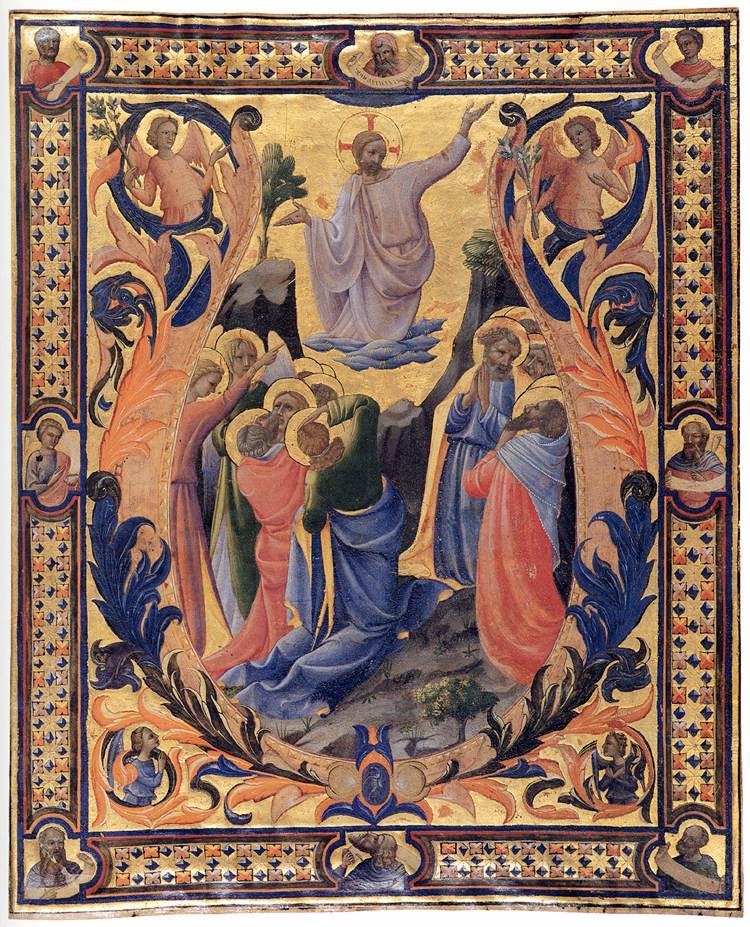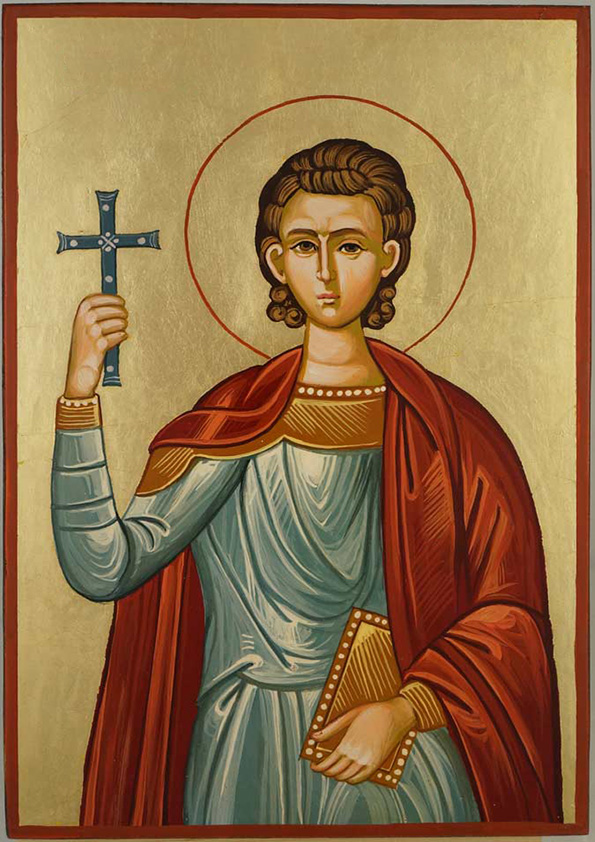Who is St Pancras?
Pancras was born in about the year 290 in Phrygia, a region of Asia. He was the only son of Cleonius, a wealthy Roman nobleman, and his wife. She was also of noble birth but her name is not known to history. Pancras spent the first ten years of his life in and around Phrygia. When he was nine years old his mother died. Cleonius, her husband, laid her body to rest beside the gently flowing water of a brook which ran through the grounds of the family estate. Every day for three months the grief stricken Cleonius and the motherless Pancras made their way together to the grave. Every day they wept over it and cast fresh flowers upon it.
After three months of relentless sorrowing Cleonius felt himself beginning to fade under the weight of his grief. He took to his bed. Sure enough, it was soon pronounced by his doctors to be his death bed. Cleonius sent for his brother, Dionysius, and committed to his care the ten year old Pancras. “I pray you take charge of the boy”, Cleonius said. “Bring him up as your own son. Dionysius agreed and promised to care for Pancras. Cleonius breathed his last. He had died of a broken heart. His body was laid to rest next to his wife’s, beside the gently flowing water of the brook.
Dionysius decided that the best way to keep his promise about his orphan nephew was to take him to live in Rome. At that time Rome was the capital city of the greatest empire the world had ever known. There Pancras would have the opportunity for a fine education. When he grew to manhood he would have a wide choice of careers, maybe in the Roman army in the service of the empire. So off to Rome from Phrygia went uncle and nephew. They sailed across the Mediterranean Sea and arrived at last in Rome, the Imperial City. It was about the year 300. The Emperor Diocletian was ruling the Roman Empire.
Under his direction Christians were being mercilessly persecuted. Many followers of Jesus of Nazareth had already given their lives for refusing to renounce their faith. The Emperor Diocletian was enraged that the more he persecuted the Christians the more they persisted. At that time one of the leaders among the Christians in Rome was a man called Marcellinus. He was a good and kind man, devoted with all his heart to his faith in Jesus. He was in the habit of going stealthily from house to house under cover of darkness in order to persuade as many people as he could that Jesus of Nazareth had died to save the world.
The activities of Marcellinus and the success of his work came to the notice of Galerius. He was one of the chief ministers of the Emperor. He was even more cruelly opposed to Christians than his imperial master. Galerius persuaded the Emperor Diocletian to destroy all the members of the rebellious religious sect who persisted in their faith in Jesus. Galerius proposed the final solution. Diocletian agreed. Together they planned the extermination of the obstinate sect. The Great Persecution began. It was the year 304.
With fierce determination, followers of Jesus of Nazareth were pursued and put to death in excruciating ways. Among the methods of extermination used were stoning, flogging and being fed to wild animals. Martyrs for the Christian faith were created by the score. Good and kind Marcellinus daily expected to receive his own call to martyrdom. In the meantime, he continued his activities. He encouraged the faithful who feared for their lives. He taught Jesus to the people with fervent enthusiasm.
One night, Marcellinus arrived at the house where Pancras and his uncle Dionysius were staying. Marcellinus told them the Good News. They listened. They believed. Gradually uncle and nephew gave up going to worship in the Temple of Jupiter and turned their faith to Jesus. They would go at midnight to the secrecy of the catacombs. There they would join their Christian friends. With them they would worship God and join in the celebration of the Holy Mass. When dawn began to break upon the sky they would make their way home again.
Soon after the conversion of Pancras and his uncle Dionysius to the Christian faith. Dionysius died. Pancras was now on his own in the world. Kneeling beside the dead body of his uncle, Pancras prayed with all his soul for strength to persevere. Suddenly, without warning, four soldiers of the Roman army burst into the room. – They ordered Pancras to his feet. They frogmarched him to the Imperial Palace. They flung him into the presence of the Emperor. The Emperor Diocletian was seated on the splendour of the imperial throne. Galerius stood in attendance at his side. Around the throne were assembled the imperial court and the chief soldiers of the Roman army in -all their might and majesty. Pancras trembled before the Emperor. A boy of fourteen years old. Frightened. Alone. First the Emperor tried persuasion. Pancras resisted. Next the Emperor uttered threats. Pancras resisted. Finally the Emperor played his trump card. “Reject Jesus and worship Jupiter or I’ll have you thrown to the wild animals!” Pancras resisted. Firm in faith he replied to the Emperor, “I dare not deny my Saviour. I will not worship idols. God will give me the strength to die for him.”
The Emperor Diocletian was beside himself with fury. He ordered the boy to be taken at once to the Aurelian Way, there to be put to death by the sword. The soldiers of the guard instantly obeyed the imperial command. They marched Pancras away to martyrdom. It was sunset. Pancras knelt down. The soldiers tied his hands behind his back. They plunged their swords into his heart. His soul went to God. His body was left to rot. Christian friends came during the night. They carried the corpse of the boy away and laid it to rest in the secrecy of the catacombs. It was the year 304.
Eight years later, in the year 312, the Emperor Constantine, successor to Diocletian, was himself converted to the Christian faith. Constantine decreed that the faith could be professed throughout the Roman Empire without fear of persecution. Once the faith was officially permitted the bodies of many martyrs were brought out from the secrecy of the catacombs. Their remains were regarded as sacred. They were given Christian burial.
To accommodate the remains of Saint Pancras a church was built in Rome at the second milestone on the Aurelian Way on the site of his martyrdom. In Old St Pancras Church the statue of Saint Pancras shows him holding in his hand a model of Old St Pancras Church, which stands today on the site first dedicated to his name and in his honour in the year 314. Under his patronage Christian worship has been offered on the site ever since.
Emperors and their empires come and go. The Faith of Jesus endures evermore. We are upholders of an honourable heritage. We are followers in the footsteps of a meritorious martyr. God gave him the strength to die for the Faith. We pray that he will give us the strength to live for the Faith.
Compiled by Fr Patrick Phelan, Parish Priest of Old S.Pancras 1996-1998
May your Church rejoice, O God,
confident in the intercession of the Martyr Saint Pancras,
and by his glorious prayers
may she persevere in devotion to you
and stand ever firm.
Through our Lord Jesus Christ, your Son,
who lives and reigns with you in the unity of the Holy Spirit,
God, for ever and ever. Amen.
stpancrasoldchurch.posp.co.uk
